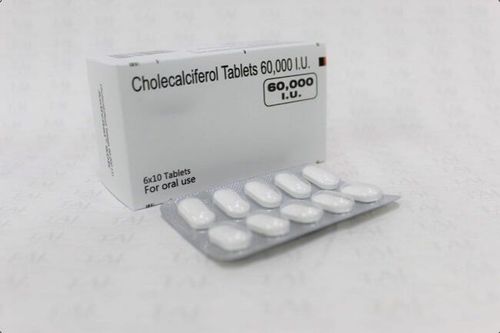This is an automatically translated article.
Agidoxin is a medicine containing pyridoxine hydrochloride with a strength of 250mg. Agidoxin is used to treat vitamin B6 deficiency.
1. What is Agidoxin?
Agidoxin (Pyridoxine) is easily absorbed from the gastrointestinal tract. The absorption of pyridoxine may be reduced in people with malabsorption syndromes or gastrectomy. Normal plasma pyridoxine concentrations range from 30 ng/ml to 80 ng/ml.
After taking Agidoxin, most of the drug is stored in the liver, the rest in the muscles and brain. The major forms of vitamin B6 circulating in the blood are pyridoxal and pyridoxal phosphate, which are highly protein bound. Note that pyridoxal crosses the placenta and enters breast milk, pyridoxal/fetal plasma concentrations are 5 times higher than in maternal plasma. In red blood cells, pyridoxine is converted to pyridoxal phosphate, and pyridoxamine is converted to pyridoxamine phosphate. In the liver, pyridoxine is phosphorylated to pyridoxine phosphate, converting the amine to pyridoxal and pyridoxamine for rapid phosphorylation.
The half-life of pyridoxine is about 15-20 days. The drug is excreted in the urine as 4-pyridoxic acid, a metabolite of pyridoxal. The rate of degradation is increased in patients with cirrhosis.
2. What are the effects of Agidoxin?
Vitamin B6 exists in three forms: pyridoxal, pyridoxine and pyridoxamine, when entering the body they will be converted into pyridoxal phosphate salts, partly into pyridoxamine phosphate salts. These two metabolites act as coenzymes in the metabolism of proteins, carbohydrates and lipids. Pyridoxine participates in the synthesis of GABA (gama-aminobutyric acid) in the central nervous system. Pyridoxine is also involved in the synthesis of hemoglobin.Vitamin B6 deficiency is rare, but can be seen in the following cases: malabsorption, inborn vitamin B6 metabolism disorders, or increased vitamin B6 requirements due to pyridoxine antagonists (isoniazid, hydralazine, cycloserin, etc.). penicilamin,...) A deficiency of pyridoxine can lead to iron deficiency anemia, peripheral neuritis, dry chapped lips, or seborrheic dermatitis.
The drug Agidoxin has the effect of treating symptoms of vitamin B6 has been identified. In addition, pyridoxal is also needed when the body's need for vitamin B6 increases, seen in cases of: burns, alcoholism, congestive heart failure, gastrectomy, dialysis, hyperthyroidism, prolonged fever, bacterial infections , enteritis, diarrhea, hepatobiliary disease. Pyridoxine is also used as an adjuvant treatment for convulsions and coma due to isoniazid poisoning or mushroom poisoning of the genus Gyromitra.
Do not use Agidoxine in cases of hypersensitivity to pyridoxine or any of its ingredients
3. Dosage and how to use Agidoxin
Agidoxin is taken orally, the patient takes Agidoxin with a little water.
Agidoxin contains 250mg of pyridoxine for adults with a dose of 1-4 tablets / day, according to the manufacturer's instructions for use.
Agidoxin dosage for some specific cases:
Treatment of drug deficiency: the usual oral dose of vitamin B6 is 100-200 mg/day, used for 3 weeks. After that, it can be used prophylactically at a dose of 25-100 mg/day. Treatment of hereditary iron-cell anemia: the usual oral dose of pyridoxine is 200-600 mg/day. If there is a response, the dose can be reduced to 30-50 mg/day. Lifelong vitamin therapy may be required in these patients to prevent anemia. Patients taking isoniazid, to prevent anemia neuritis due to pyridoxine deficiency: should take 10-50 mg vitamin B6 daily. Patients taking cycloserin, to prevent convulsions: orally 100-300 mg/day in divided doses. Treatment of convulsions, coma due to acute isoniazid poisoning: use pyridoxine at a dose equal to the amount of isoniazid taken orally.
4. Unwanted effects when using Agidoxin
Pyridoxine is usually non-toxic, prolonged use of pyridoxine at a dose of 10mg/day is considered safe, however, if pyridoxine is used above 200mg/day and used daily for a long time, it can cause neuropathy.
Side effects of Agidoxine on the nervous system: Drowsiness and drowsiness are possible central nervous system symptoms when using Pyridoxine. In addition, Agidoxin also affects neuromuscular, causing severe peripheral neuritis with symptoms such as unsteady gait, numbness of the feet, hands, and clumsy hands. Side effects of Agidoxin on endocrine and metabolism: Patients taking the drug may have acidosis, or decreased folic acid. Gastrointestinal side effects: Nausea and vomiting may occur in people taking Agidoxin. In addition, the drug may increase liver enzymes (AST). In addition, the use of Agidoxin may cause an allergic reaction.
6. Warnings and cautions when using Agidoxin
Prolonged use of pyridoxine at doses from 200 mg/day has the potential to manifest neurotoxicity, the risk of pyridoxine dependence syndrome and withdrawal syndrome. The excipients of Agidoxin contain lactose, which is not suitable for patients with hereditary problems such as lactase deficiency, lactose intolerance, or lactose malabsorption. For pregnant women, pyridoxine crosses the placenta, so Agidoxine should not be used during pregnancy because of the risk to the fetus. Women who are using birth control should consult their doctor before taking this medicine. On the other hand, pyridoxine can pass into breast milk, so avoid breastfeeding while taking Agidoxin to ensure safety for the baby.
7. Agidoxin drug interactions
Agidoxine reduces the effect of Levodopa in the treatment of Parkinson's disease.
Some drugs increase the need for pyridoxine in the body, such as isoniazid, hydralazine, penicilamine, oral contraceptives.
Please dial HOTLINE for more information or register for an appointment HERE. Download MyVinmec app to make appointments faster and to manage your bookings easily.













